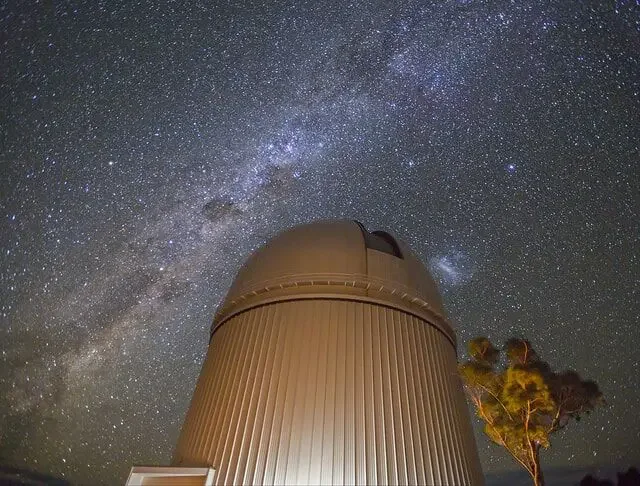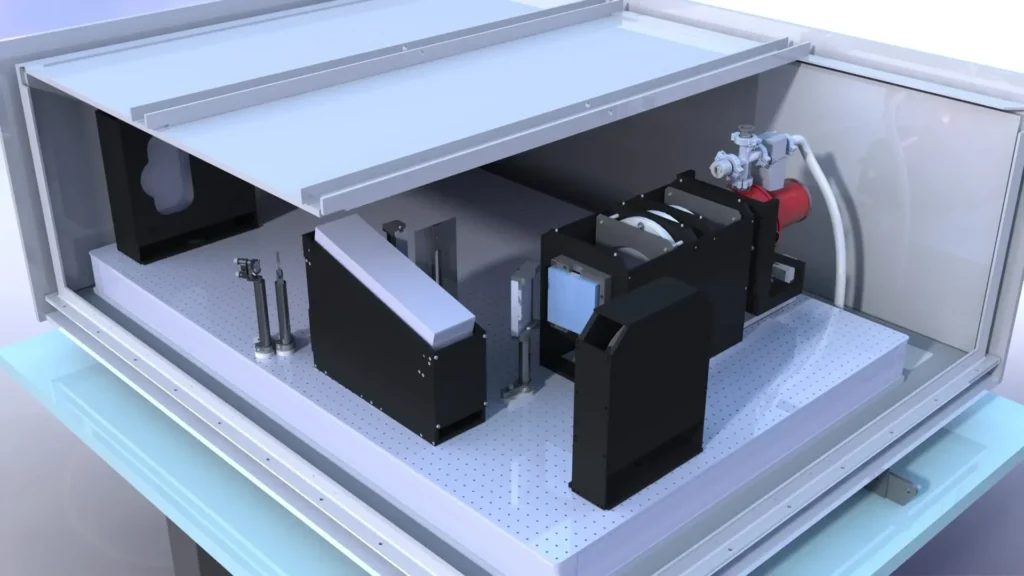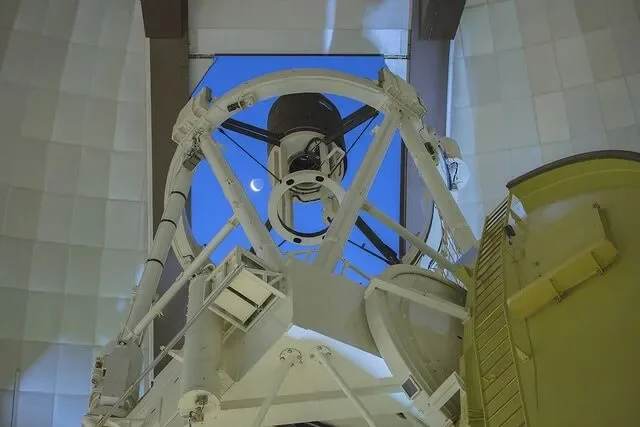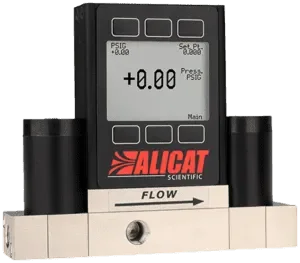Veloce echelle spectrograph utilizes closed-volume pressure control
Dr. James Gilbert was the technical lead for the Australian National University’s development of the Veloce echelle spectrograph, which is now installed on the 3.9-meter Anglo-Australian Telescope at the Siding Spring Observatory in New South Wales, Australia. Veloce integrates a highly-customized Alicat closed-volume pressure controller for stable precision pressure control of air inside the instrument. This article comes courtesy of our Australian distributor, Duff & Macintosh Pty Ltd.
AAT Dome at Siding Spring Observatory, NSW, Australia – Angel Lopez-Sanchez (AAO-MQU)
Dr. James Gilbert:
“Veloce was built primarily to detect stars that are ‘wobbling’ due to the gravitational tug of one or more orbiting planets. Veloce is based on a technique called Precision Radial Velocity Spectroscopy – we measure the spectral content of starlight and look for minuscule colour shifts (Doppler shifts) caused by the periodic motion of the star.
It is absolutely critical to control the measurement errors of the instrument, because the signal we are looking for is so small. We are looking for changes of 1/1500 pixels on our image detector, which is a physical distance of something like ten nanometers on the detector surface. This corresponds to a radial velocity measurement of around 1 m/s, meaning we can measure the speed of a star’s motion down to slow walking pace. This is sufficient to detect planets not too dissimilar to Earth, that may be in the so-called ‘habitable zone’ of the host star.
Veloce was built primarily to detect stars that are ‘wobbling’ due to the gravitational tug of one or more orbiting planets. Veloce is based on a technique called Precision Radial Velocity Spectroscopy – we measure the spectral content of starlight and look for minuscule colour shifts (Doppler shifts) caused by the periodic motion of the star.
It is absolutely critical to control the measurement errors of the instrument, because the signal we are looking for is so small. We are looking for changes of 1/1500 pixels on our image detector, which is a physical distance of something like ten nanometers on the detector surface. This corresponds to a radial velocity measurement of around 1 m/s, meaning we can measure the speed of a star’s motion down to slow walking pace. This is sufficient to detect planets not too dissimilar to Earth, that may be in the so-called ‘habitable zone’ of the host star.
If the air pressure in the instrument changes, then the refractive index at the surface of the optics changes, and our signals are completely drowned out. We decided to shield the instrument from atmospheric pressure variations by keeping it at a fixed positive pressure at all times. We needed a stability of 5 mbar, with a goal of 1 mbar, in an 1800-litre volume with significant leaks. We approached Alicat because we needed industrial-grade reliability as well as science-grade performance. Alicat rose to the challenge and modified one of their standard products to provide an affordable solution to our requirements. The instrument has been operating for several months already, and its internal pressure has not ventured beyond 0.3 mbar of our setpoint, which is fabulous.
Veloce is now fully commissioned and has already observed its first planetary systems. Initially, we are looking at known candidates found by NASA’s Transiting Exoplanet Survey Satellite (TESS). Veloce is currently the best instrument in the world for some of these targets, and may be the first to confirm the existence and accurately measure the mass of planets we previously didn’t know existed.”
Veloce echelle spectrograph interior – James Gilbert (ANU)
Veloce echelle spectrograph interior – James Gilbert (ANU)
More about the Alicat dual-valve pressure controller
When the dual-valve pressure controller detects the smallest of deviations from the setpoint, both the inlet and outlet valves adjust to return the pressure to setpoint within 30 ms. This ensures that Veloce never sees more than 0.3 mbar total pressure deviation across its 1800-liter volume.
To prevent unwanted thermal disturbances, the sensor for precision pressure control was physically isolated from the valve and flow path, so that the controller itself could be mounted outside the spectrograph chamber.



